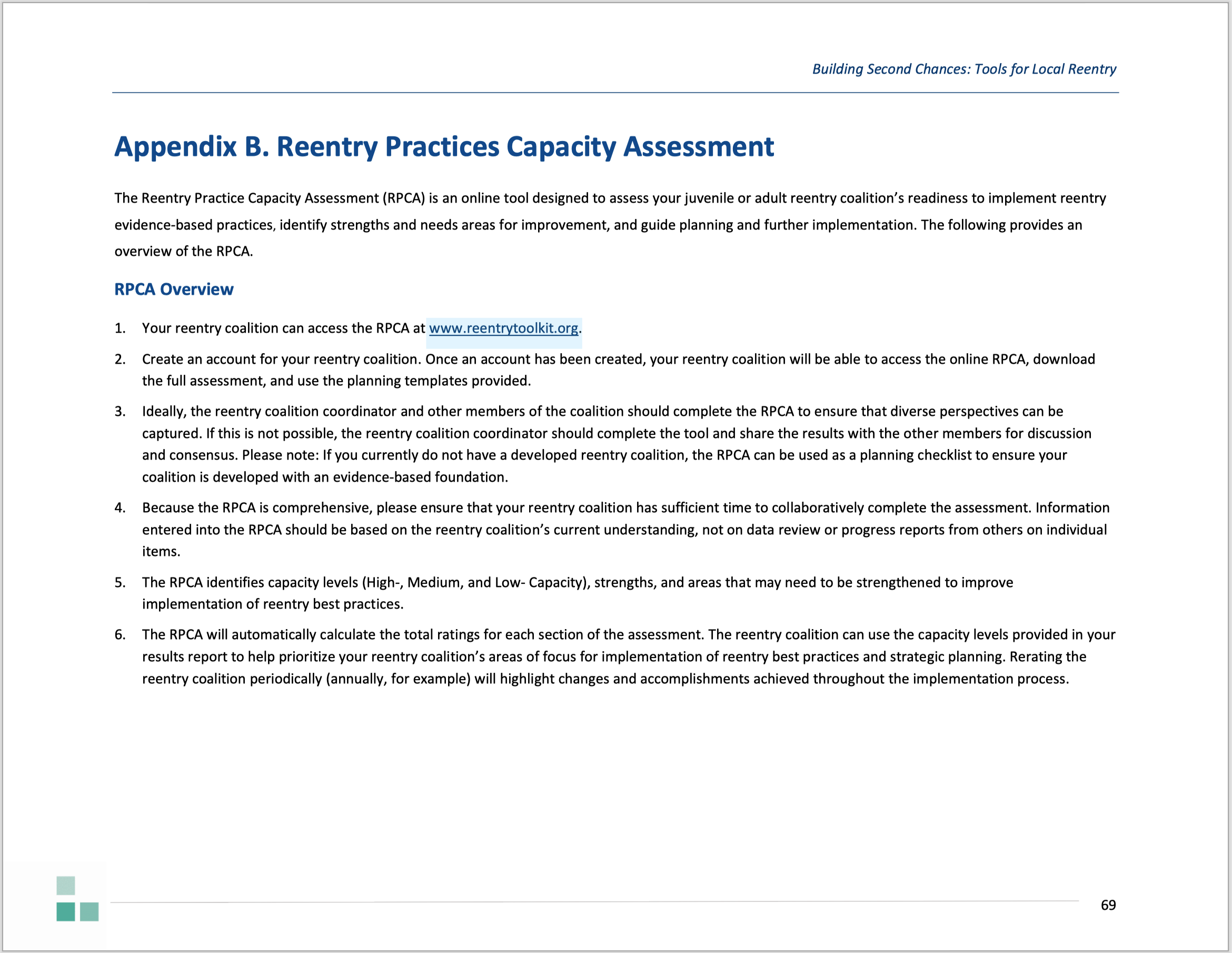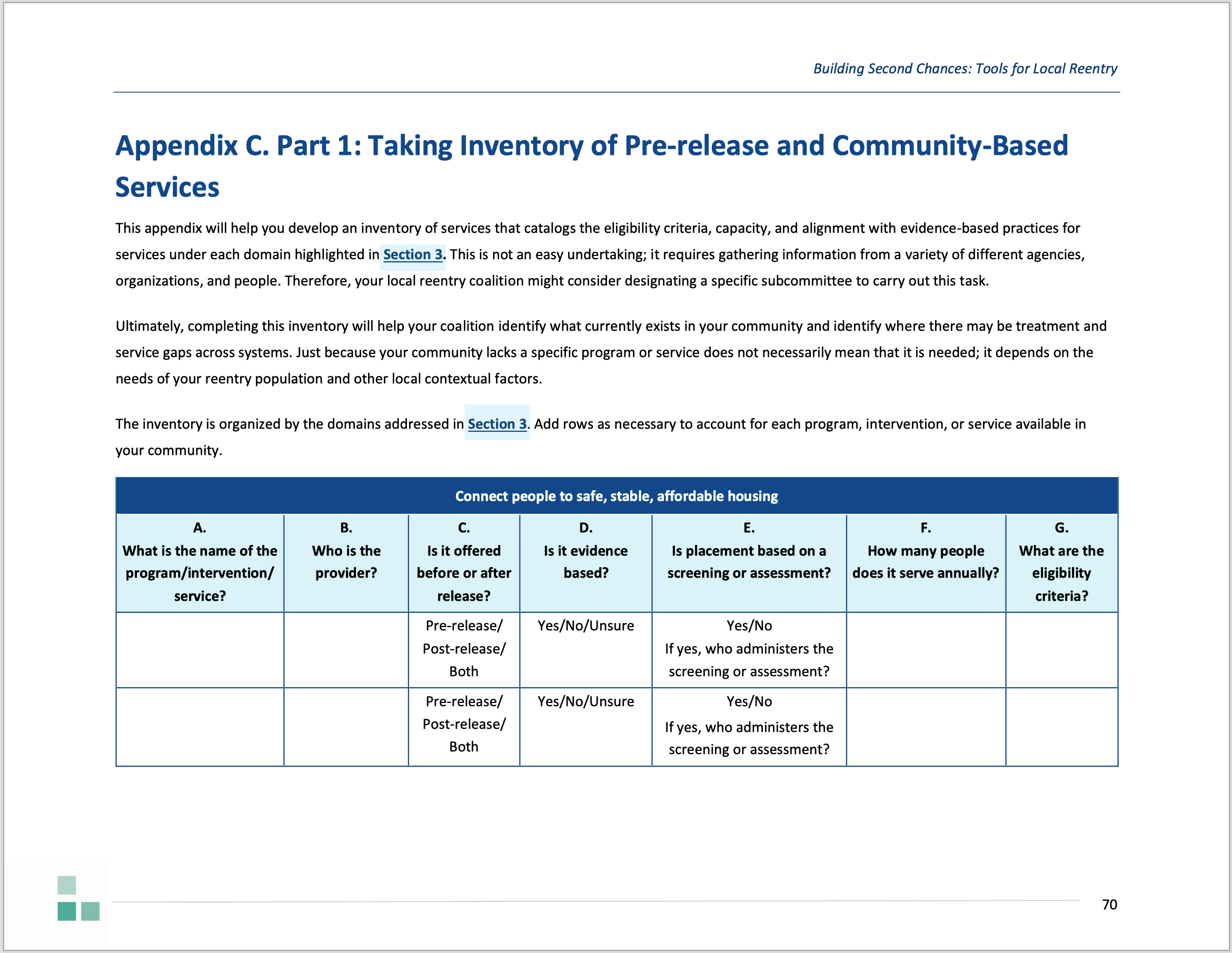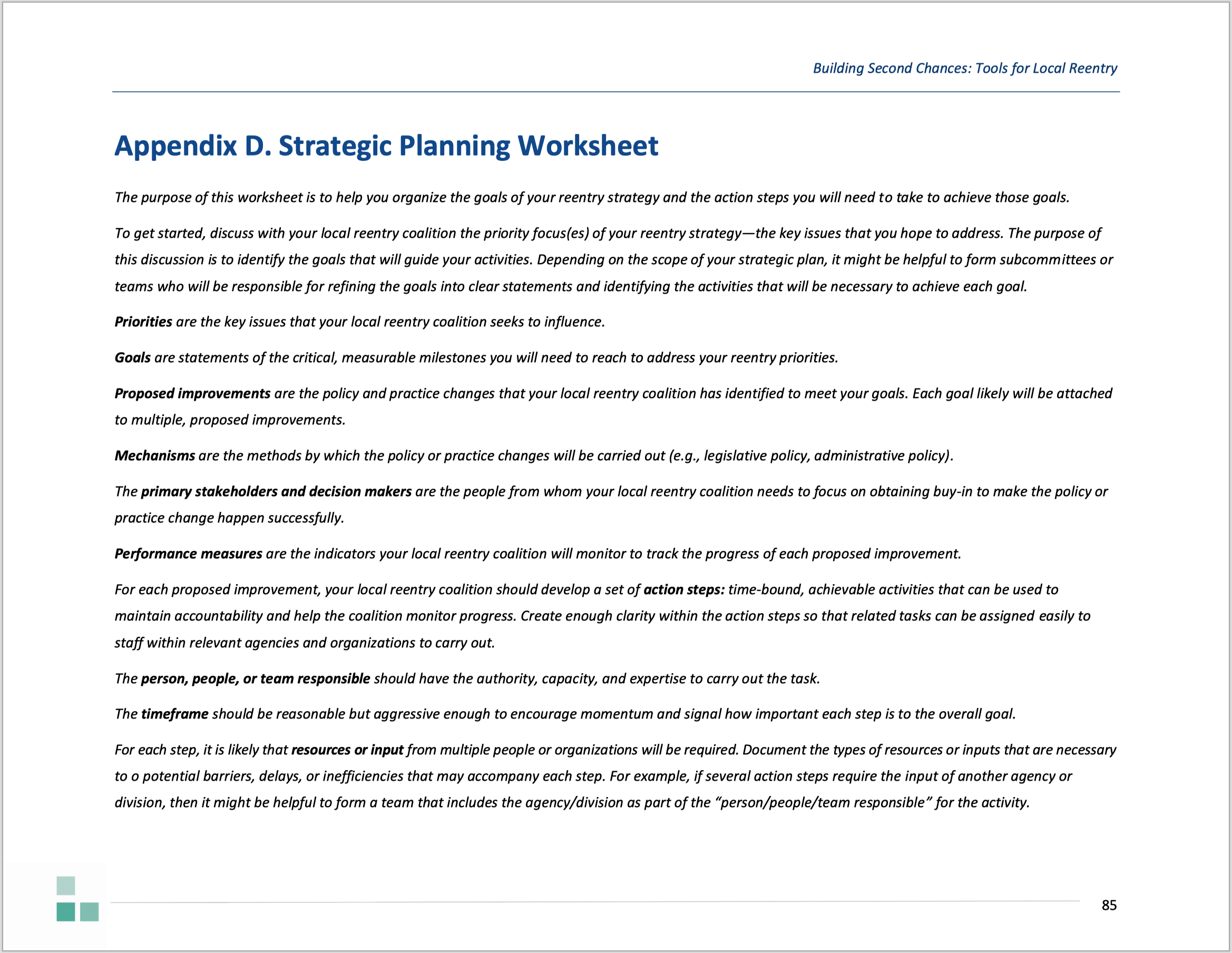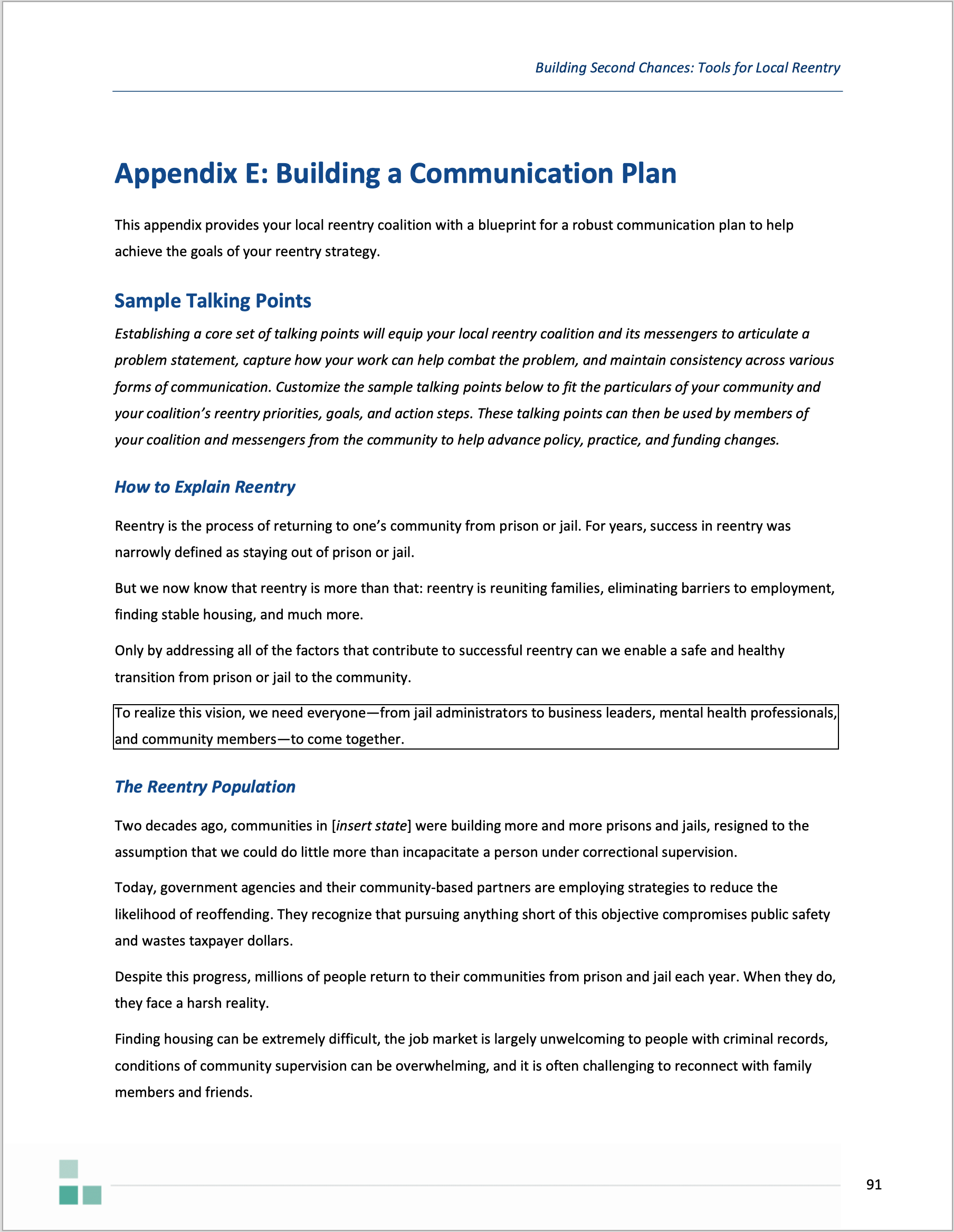Building Second Chances: Tools for Local Reentry Coalitions
This toolkit is designed for local city, county, and community leaders who want to play an active role in improving reentry policy, practice, and outcomes. Within, you will find user-friendly references to seminal publications, research findings, and noteworthy examples of the foundational knowledge needed to design new reentry strategies and reinvigorate existing ones.
The appendices in this Resource section are where you’ll find all the tools and resources referenced throughout the toolkit. Whether you’re just getting started or have been working in reentry for years, these tools are where you take what you have learned in the toolkit and apply it to your own coalition’s work.
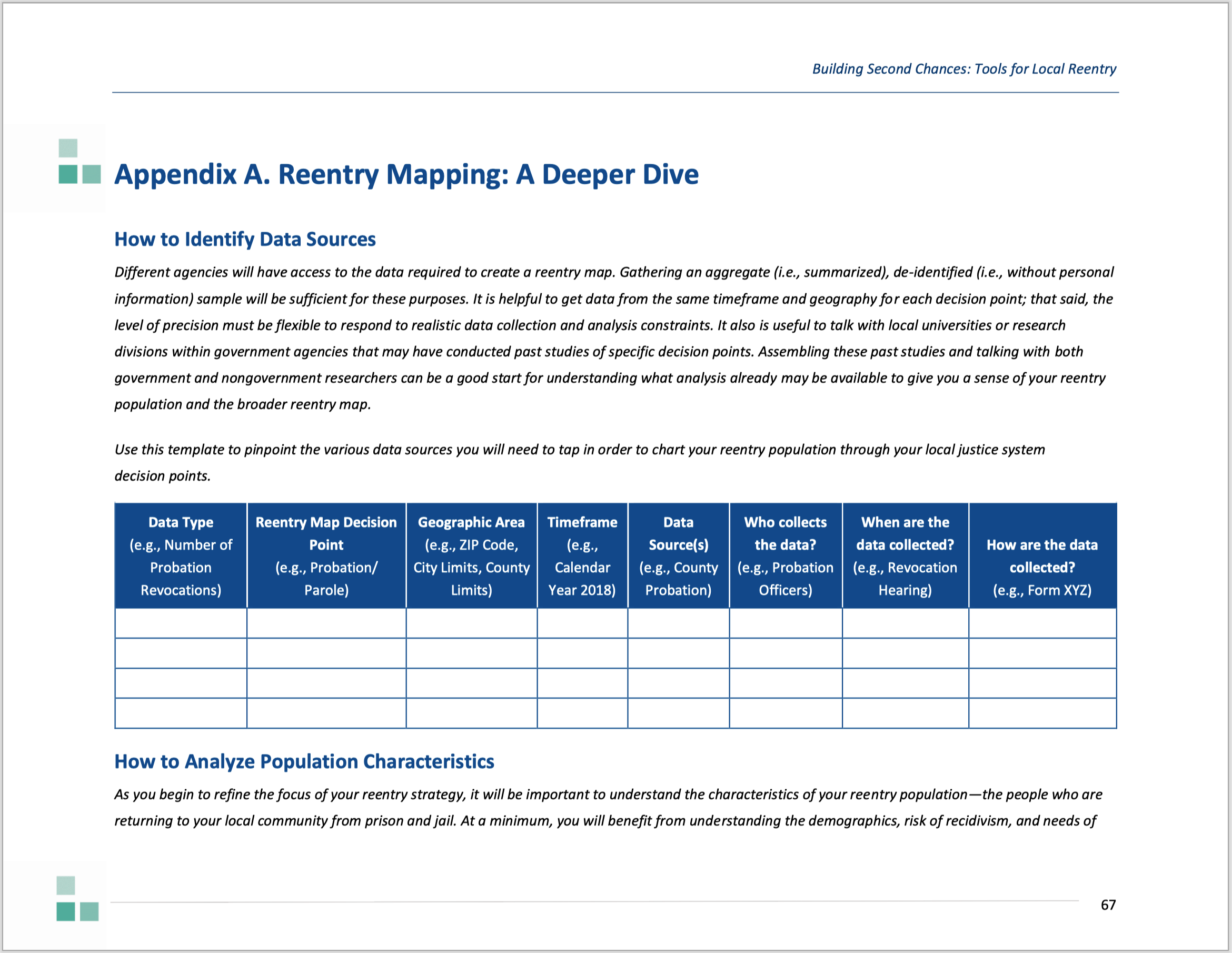 |
Appendix A: A Deeper Dive (PDF) Use this template to pinpoint the various data sources you will need to tap in order to chart your reentry population through your local justice system decision points. |
| Appendix B: Reentry Practices Capacity Assessment (PDF) The Reentry Practice Capacity Assessment (RPCA) is an online tool designed to assess your juvenile or adult reentry coalition’s readiness to implement reentry evidence-based practices, identify strengths and needs areas for improvement, and guide planning and further implementation. |
|
| Appendix C, Part 1: Taking Inventory of Pre-Release and Community-Based Services (PDF) This appendix will help you develop an inventory of services that catalogs the eligibility criteria, capacity, and alignment with evidence-based practices for services under each domain highlighted in Section 3. The inventory is organized by the domains addressed in Section 3. |
|
|
Appendix C, Part 2: Taking Inventory of Resources (PDF) |
|
| Appendix D: Strategic Planning Worksheet (PDF) Organize the goals of your reentry strategy and the action steps you will need to take to achieve those goals by discussing with your local reentry coalition the priority focus(es) of your reentry strategy to identify the goals that will guide your activities. |
|
| Appendix E: Building a Communication Plan (PDF) This appendix provides your local reentry coalition with a blueprint for a robust communication plan to help achieve the goals of your reentry strategy. |
